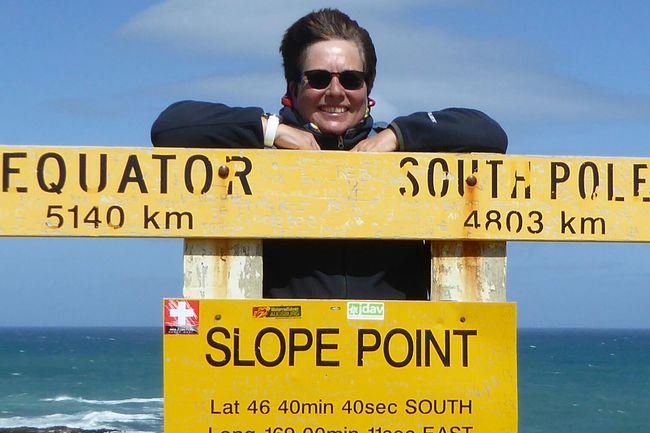
Neuseeland: 8000km solo durch das schönste Ende der Welt
vakantio.de/8000km_durch_neuseeland
Day 26 - Mount Cook, Oamaru & Penguins
Foillsichte: 08.08.2019
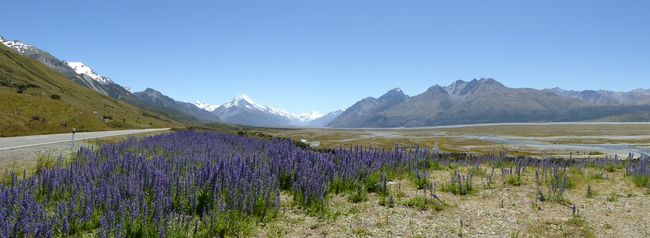
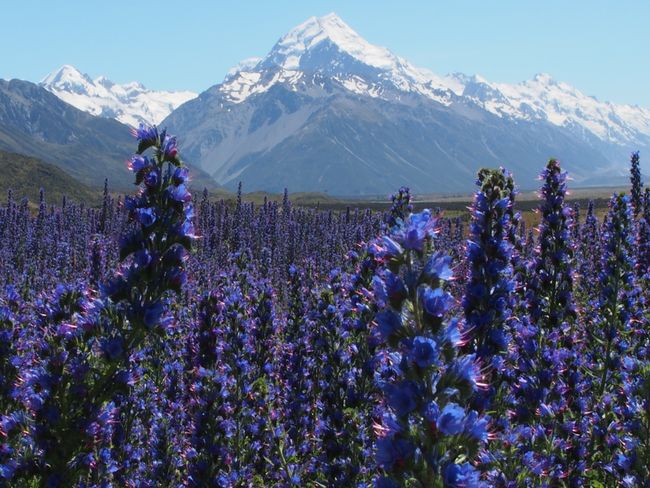
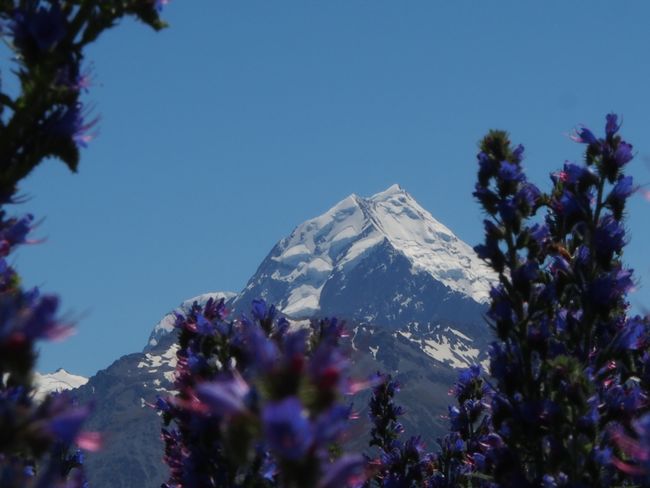
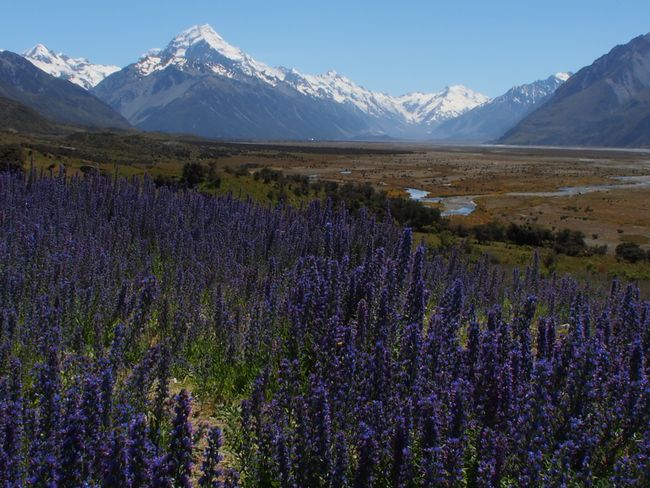
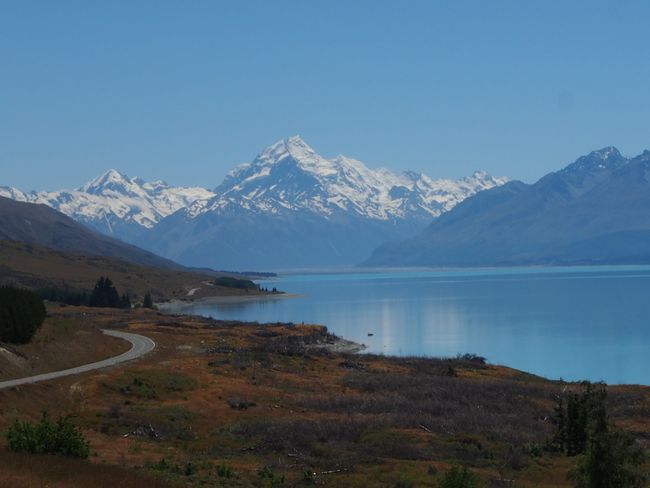
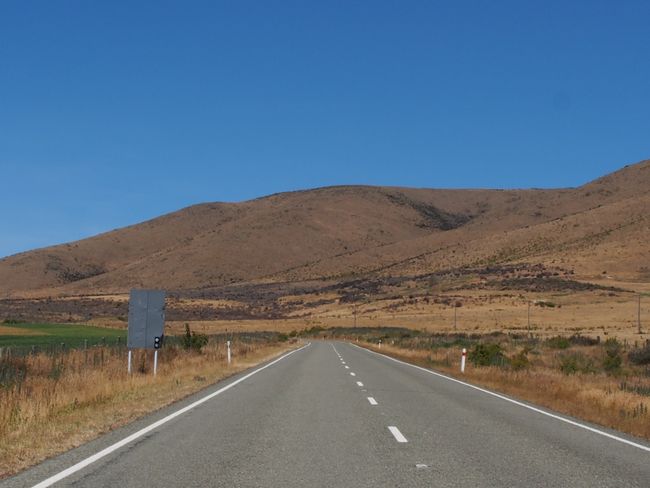
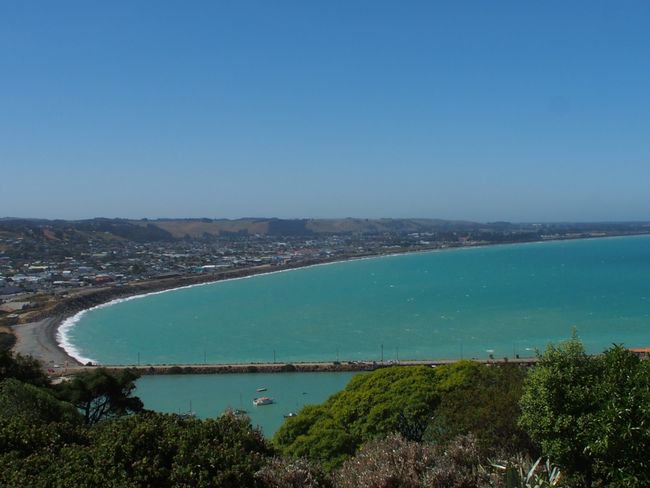
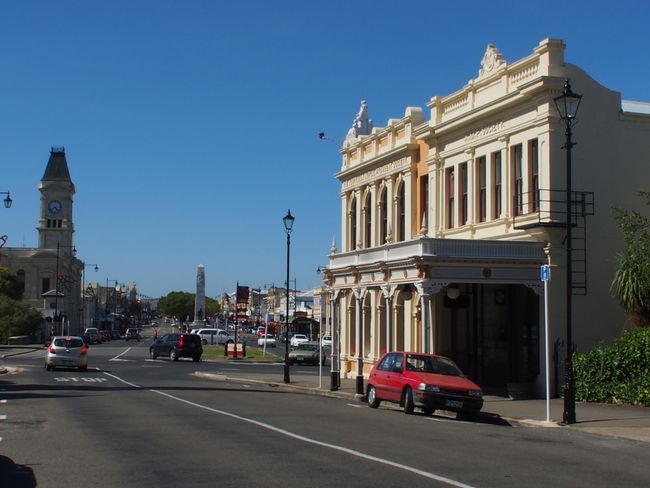
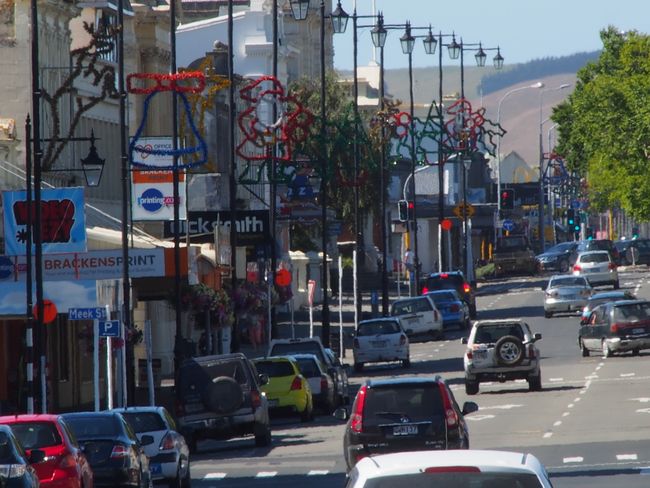
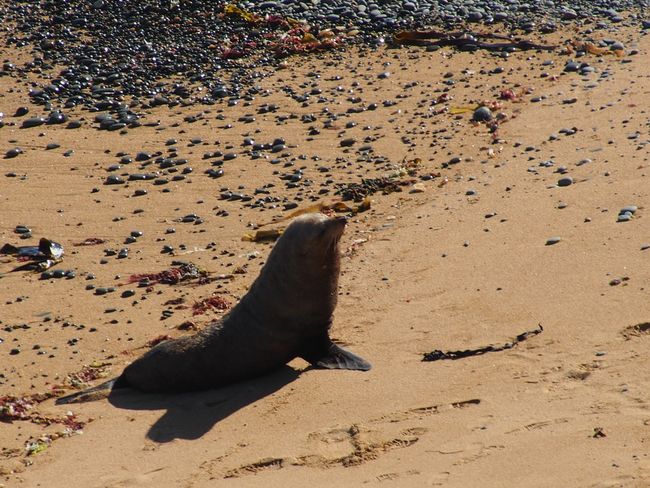
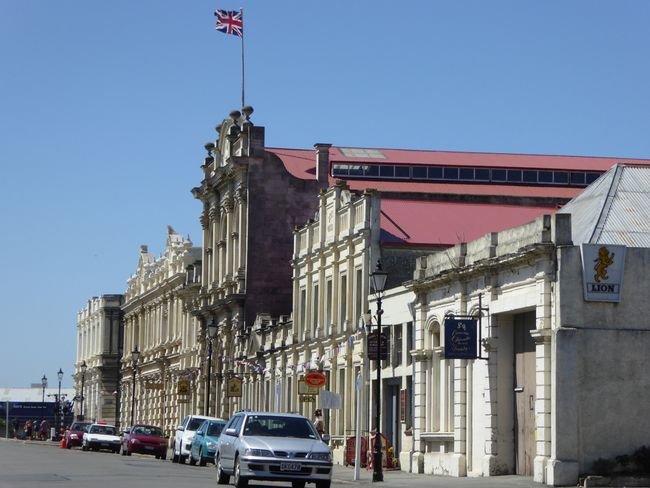
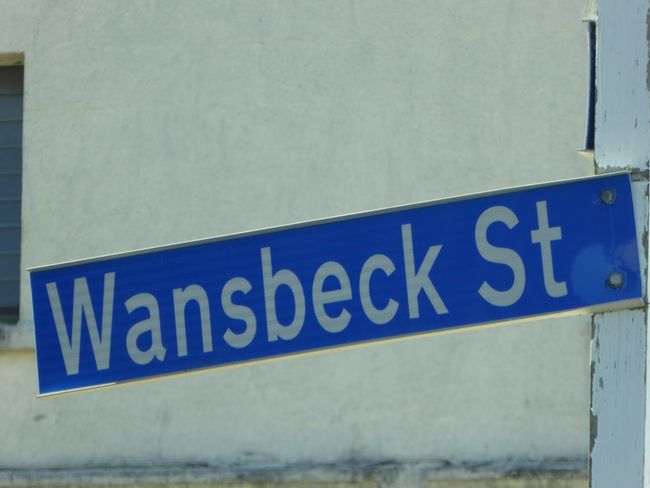
Subscribe to Newsletter
09/01/2015
The bed was super comfortable and I slept like a log. The alarm at 8:00 a.m. is bothering me accordingly. Breakfast on the terrace outside the room in the sun with the second part of the poppy seed baguette. Tomorrow I'll have the rest. The last blue cheese and the last tomatoes. I need to go shopping again. But I still have soft cheese and bread.
I drive back 10 km towards Tekapo and turn into the parking lot at the viewpoint over Lake Pukaki and towards Mount Cook. The color of the water - it's unreal, but real at the same time! The sun is shining from a cloudless sky and it's already 17 degrees Celsius, but it feels warmer when standing in the sun. Only there is a pretty cold wind blowing.
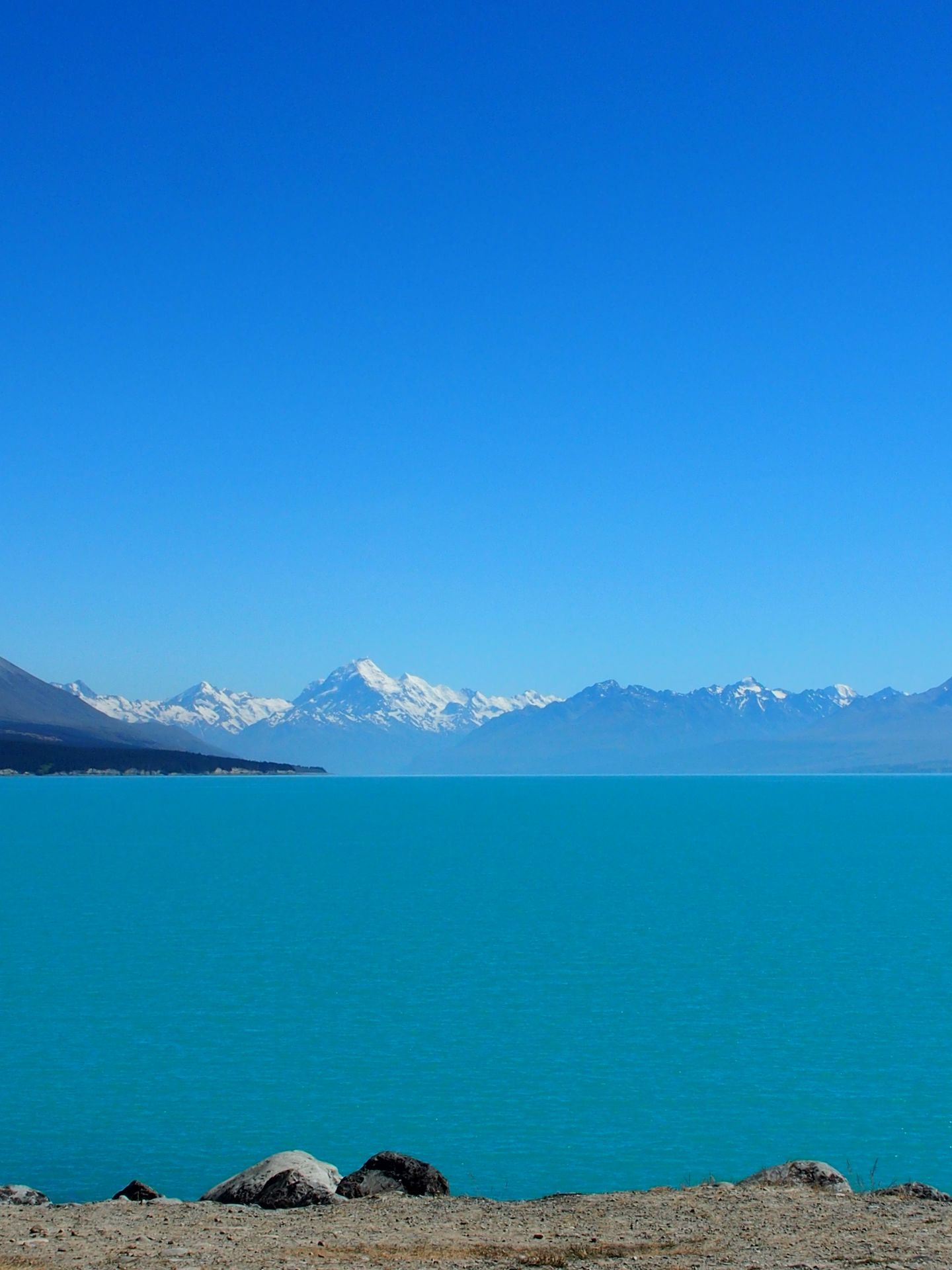
I drive along the left bank of Lake Pukaki towards Mount Cook Village, which is 55 km one-way from here. A short break of 10 minutes in a shop and then back again. The journey itself can be the goal here, because on the way to Mount Cook Village, you always have the panorama of the 3,700m high Mount Cook ahead.
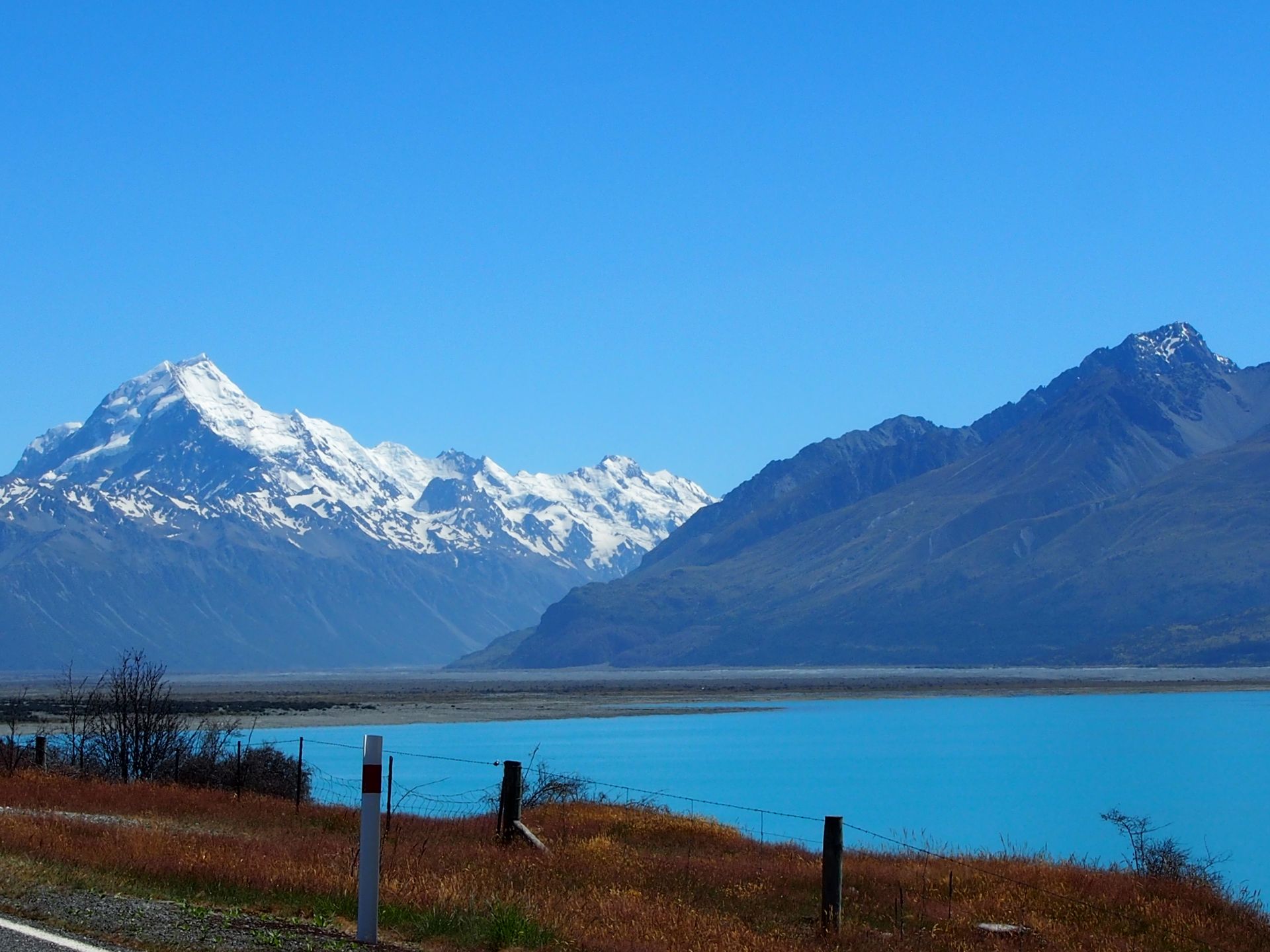
Of course, there are breathtaking hiking trails here. But once again, I don't have enough time for a real hike because I want to see more. Last time, I drove further into another road that ended above a glacier lake, but today I turn back and drive back. I'm back in Twizel by 1:30 p.m., filling up with the cheapest fuel I've filled up in the past 3 weeks (1.849) and drive quickly towards Oamaru. I pass through Omarama, the place where I spent the first night of my tour last year. Today, it's full of life. I turn left onto Highway 83 and my drive now leads along barren brown hills with several blue reservoirs at their feet. Just before Oamaru, there are old Maori rock drawings to see.
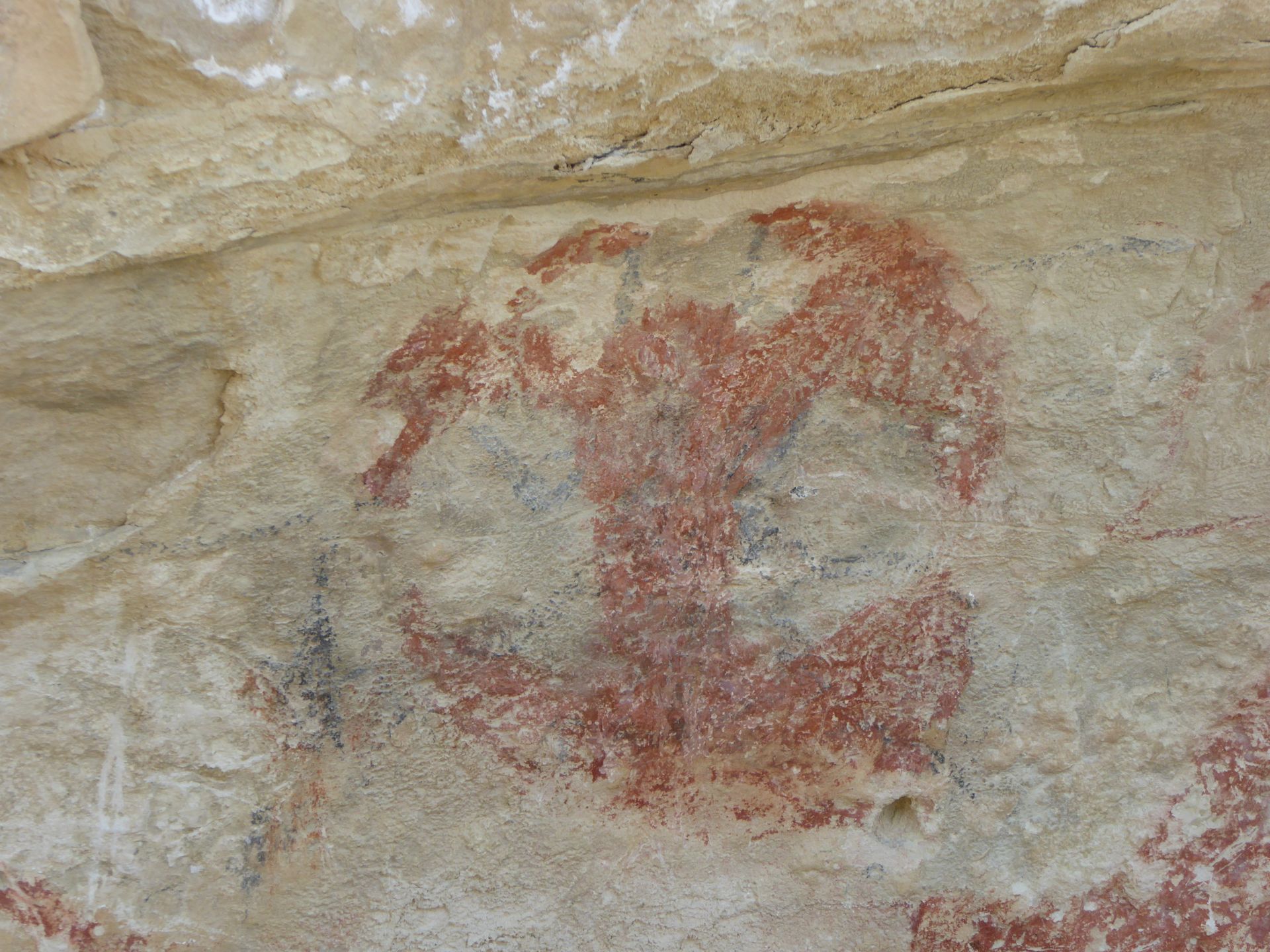
So it says - because that's what it says. But before they fenced them off, all kinds of people left their modern dedications here and larger parts of the drawings were removed and taken to some museums or simply disappeared. In any case, the drawings are not old, but 100 years old - so it's not really an "aha" moment.
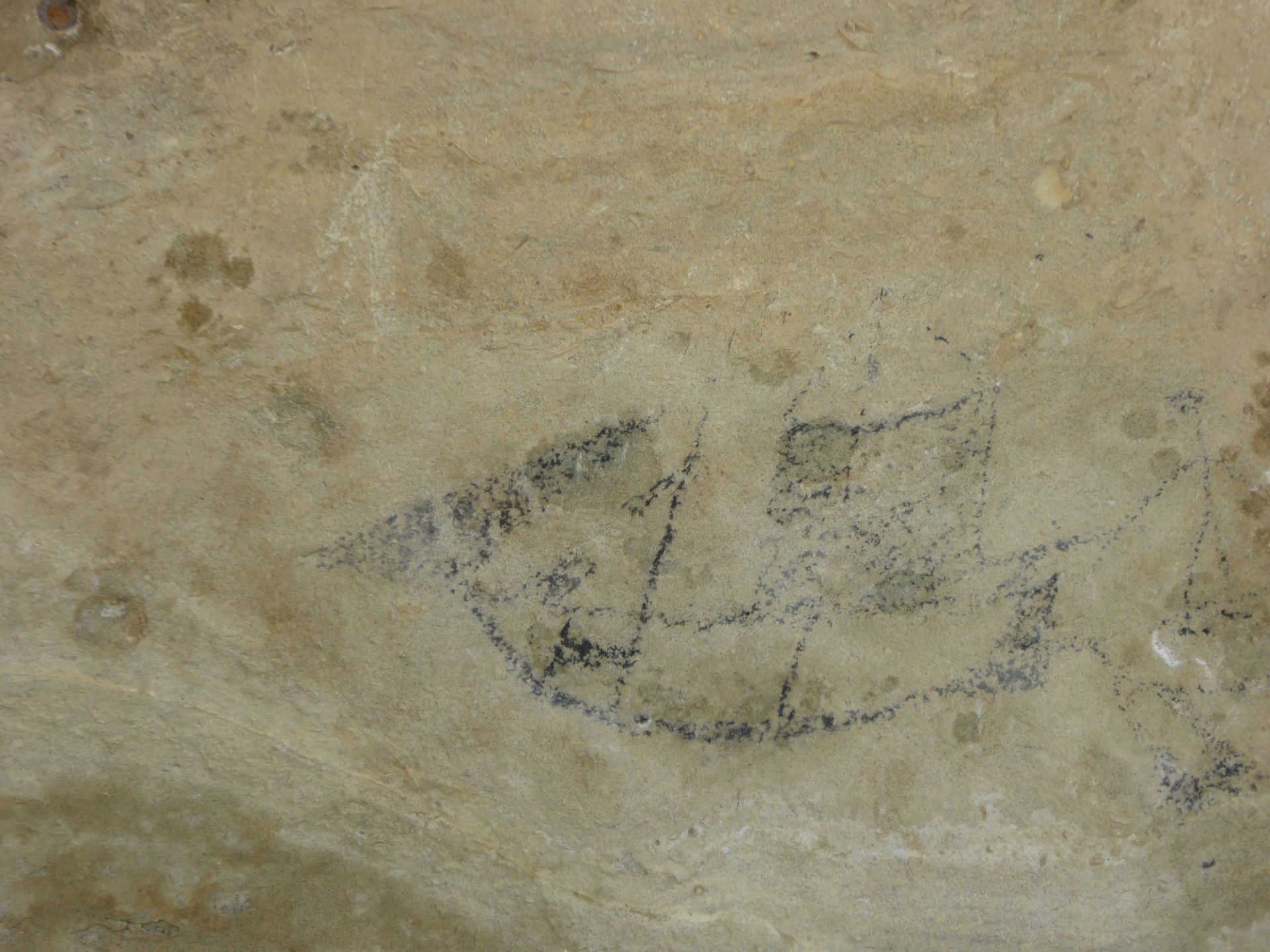
Oamaru surprises me with old facades, colorful hanging flower baskets, and venerable buildings, an old opera house with columns, and a Victorian quarter that consists of a 100-meter-long street with beautiful old facades. I drive into Thames Street to the Bella Vista Motel and check in there, asking for a ground floor room because I might repack the big bag tonight.
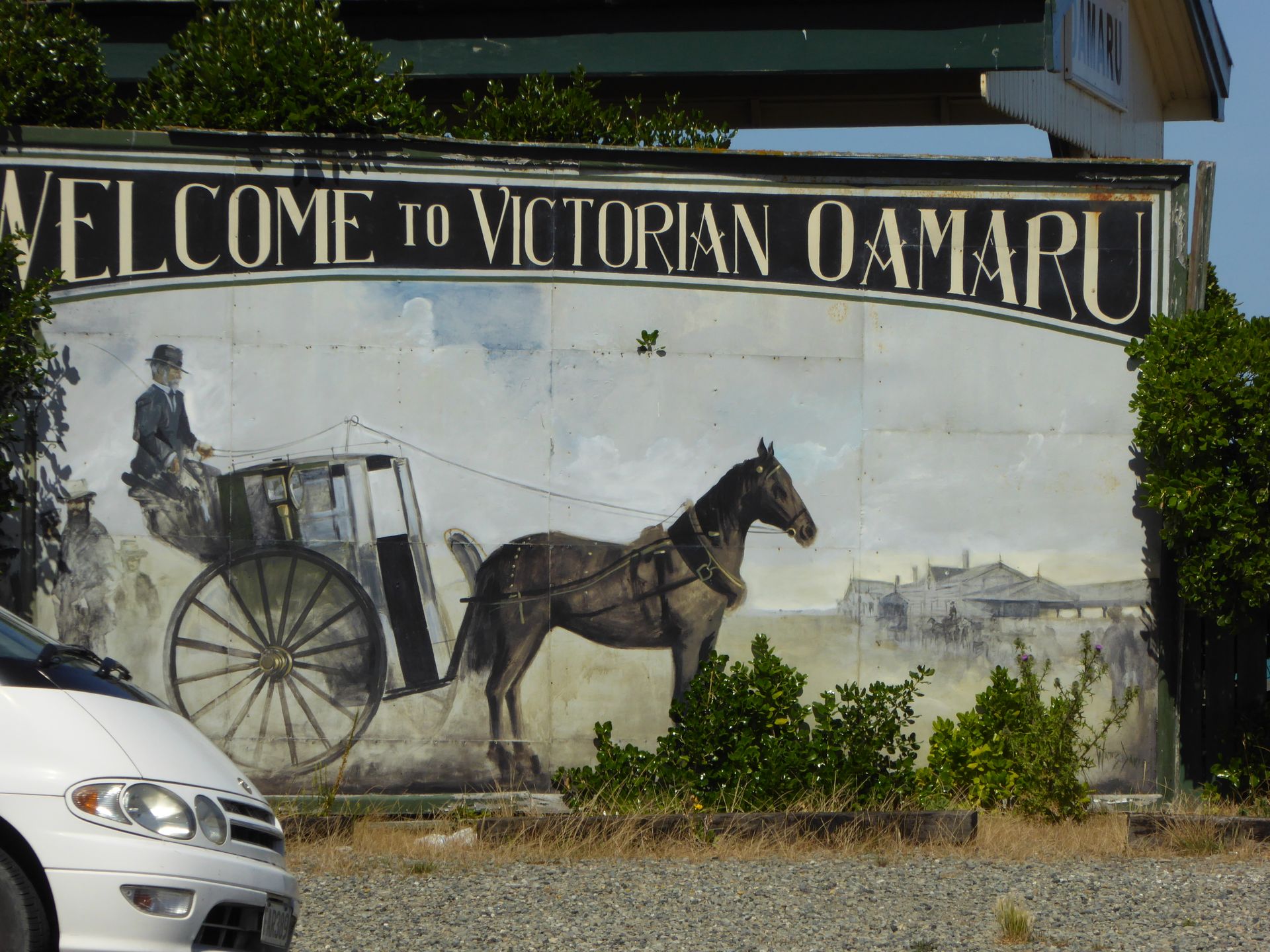
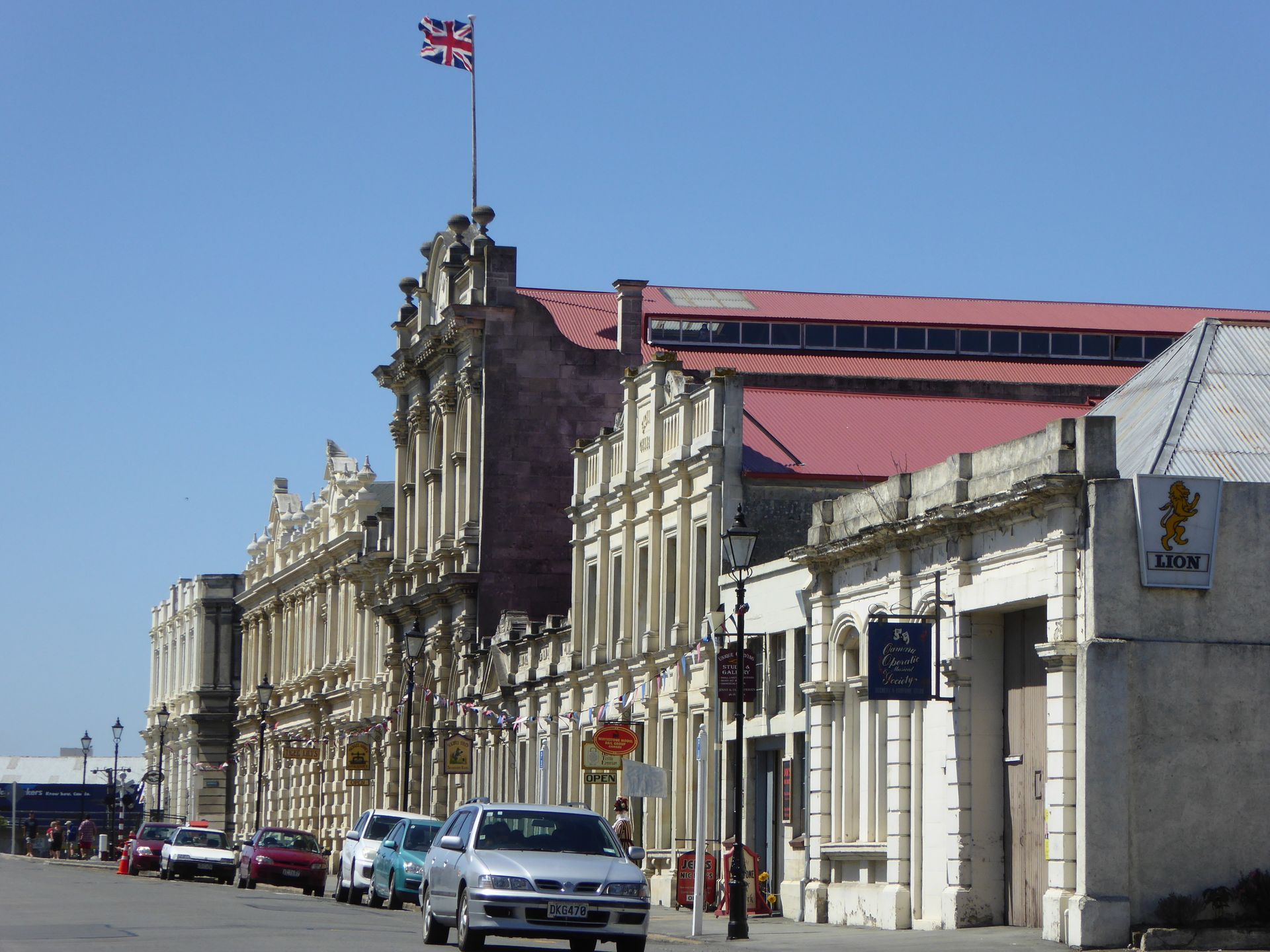
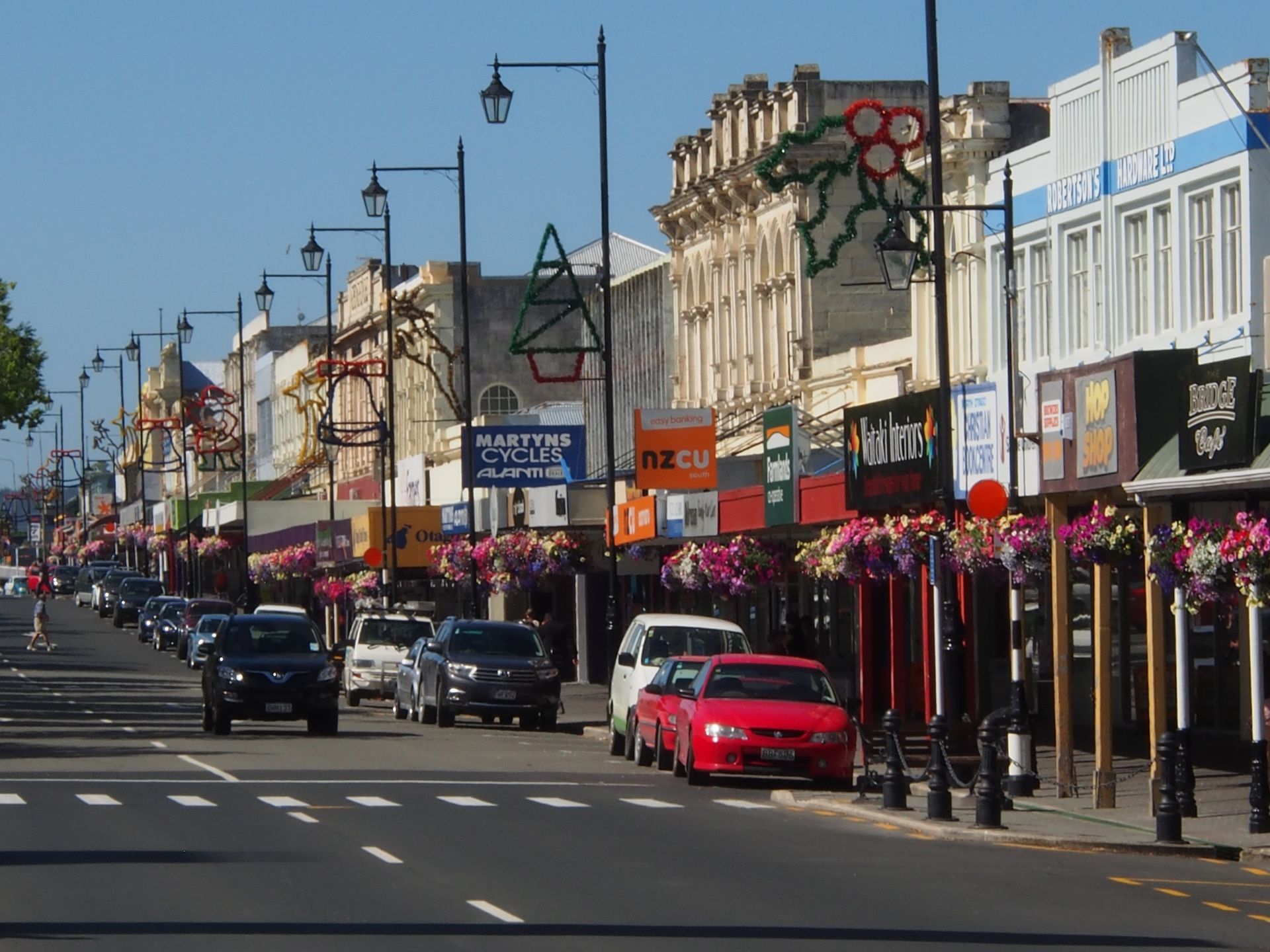
Oamaru
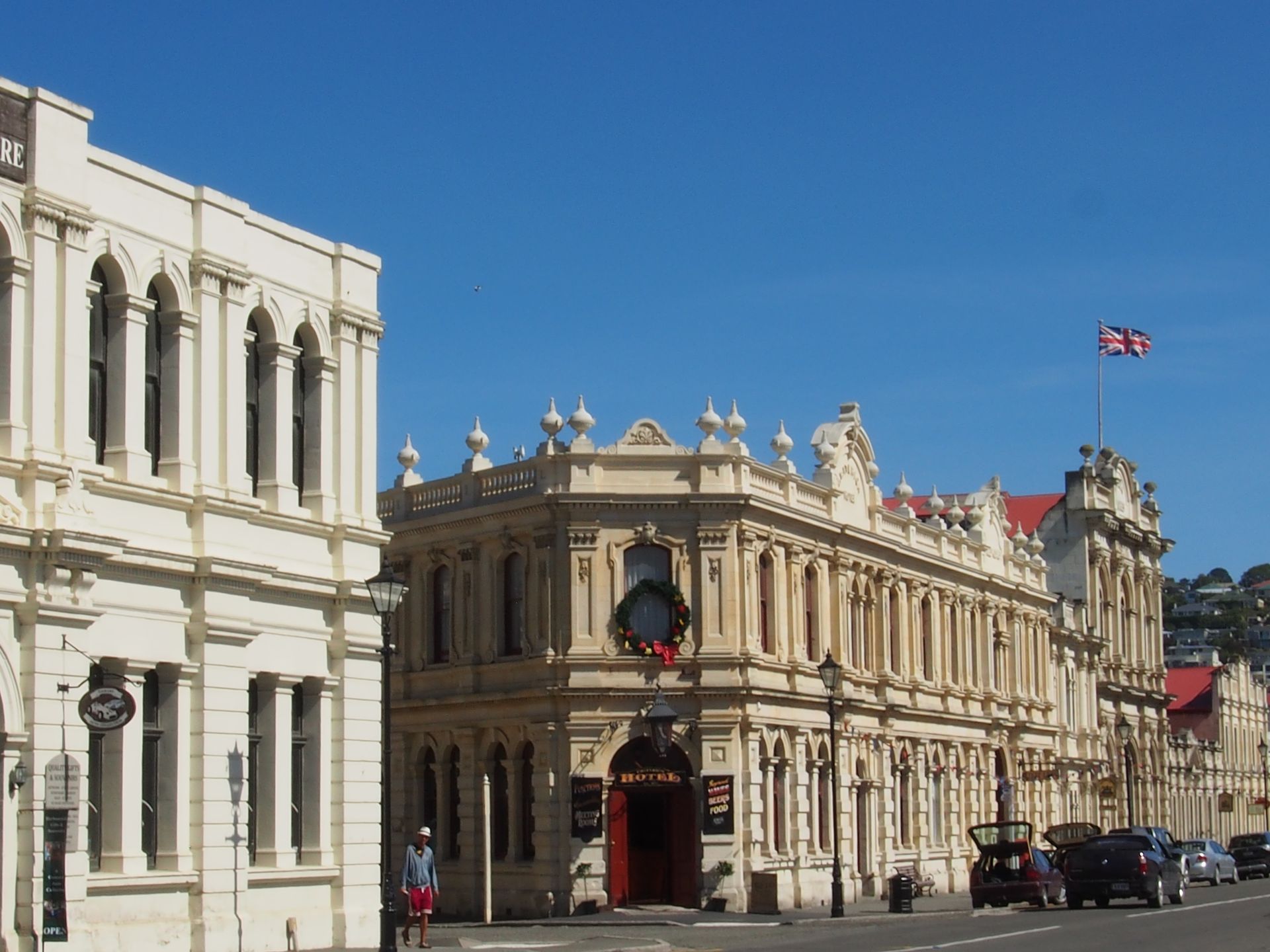
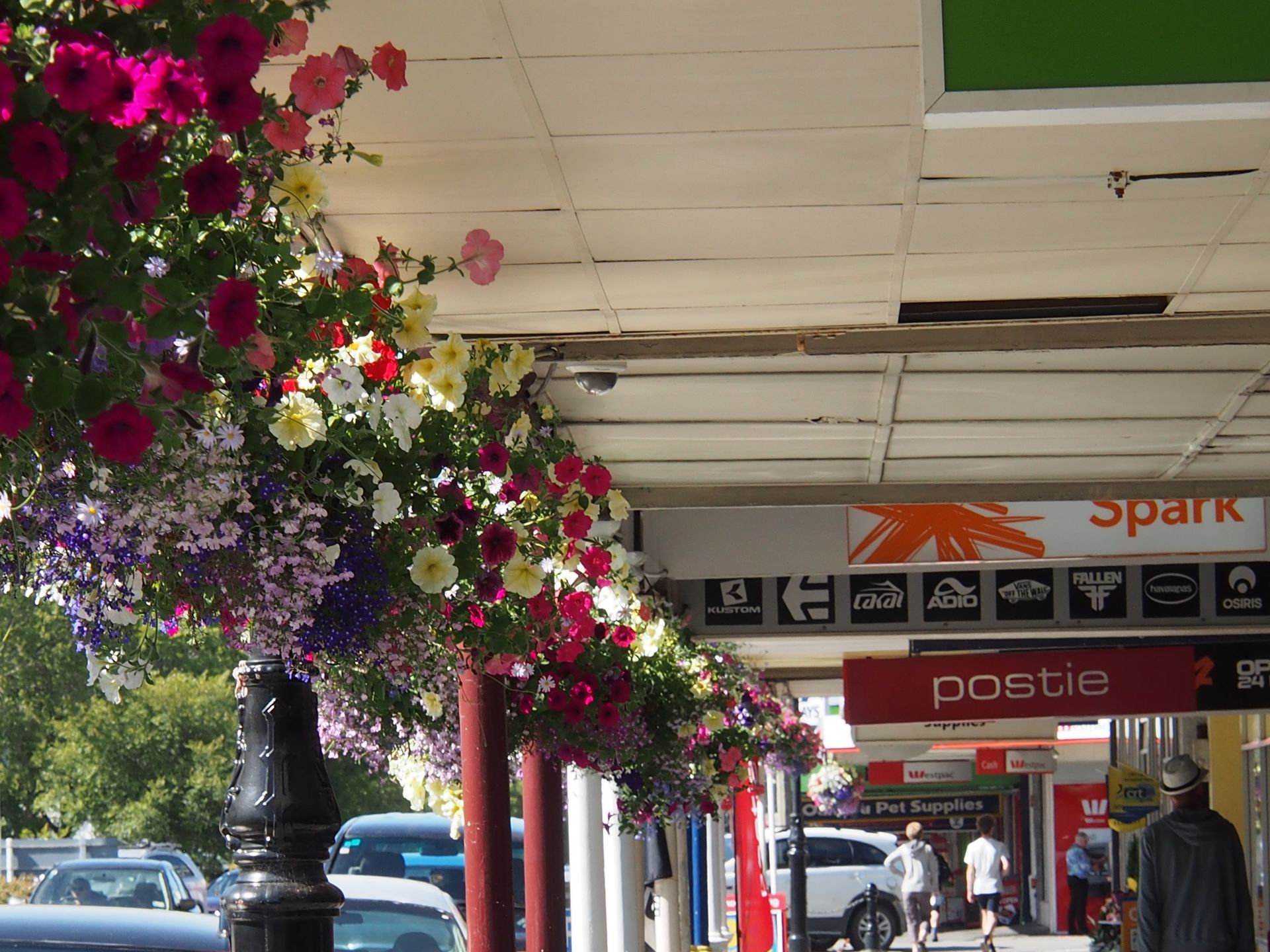
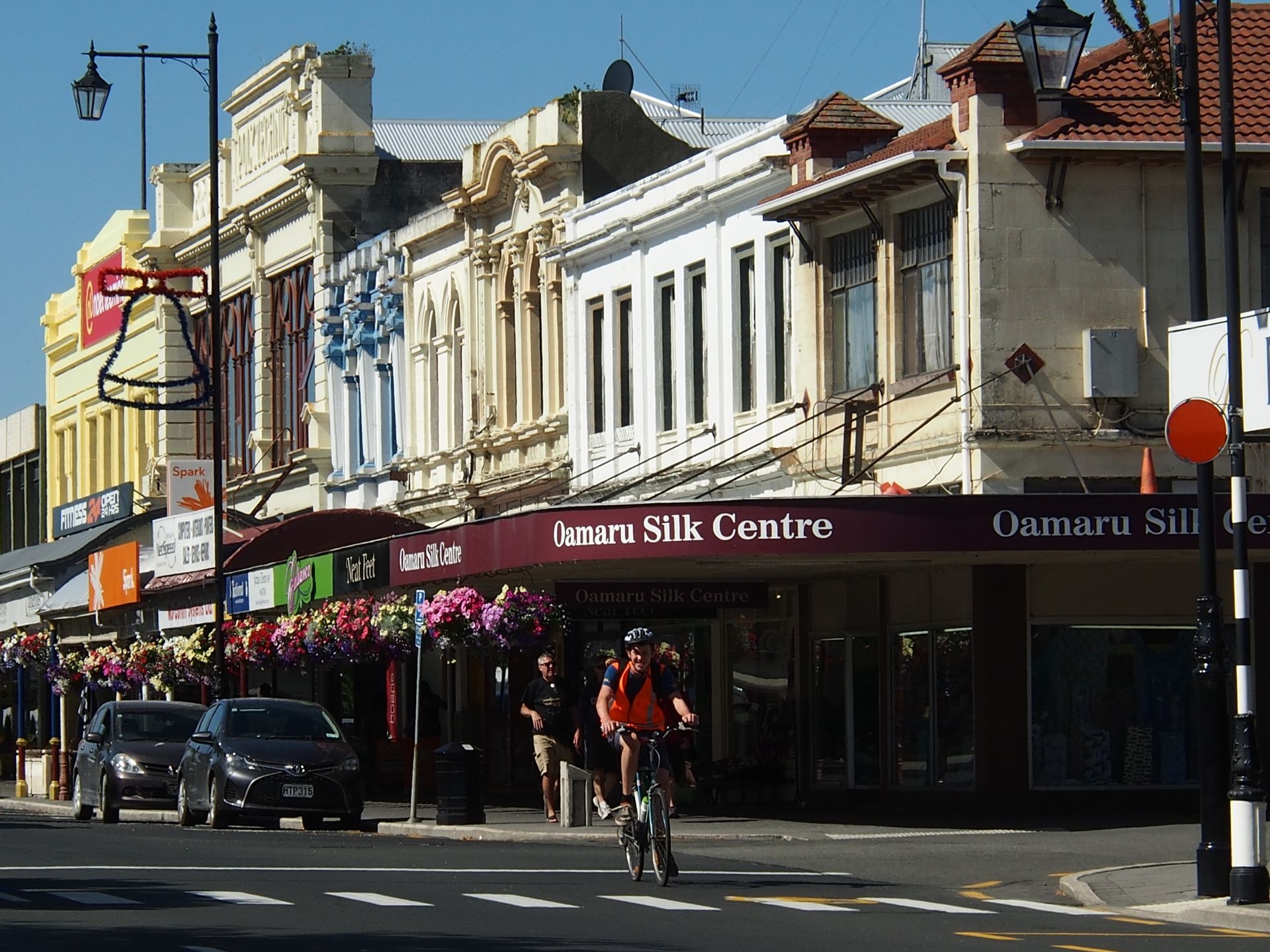
But first, I drive back to the center and along the harbor to the visitor center at the Blue Penguin Colony. Every evening around 9:00 p.m., hundreds of these penguins come out of the water here. The entrance fee costs 28 dollars, but what's more annoying is that absolutely no photography is allowed. With or without flash, filming - everything is forbidden. Oh well. I get a ticket and then drive up one of the extremely steep streets to the viewpoint above the bay. What a view of this turquoise Pacific water! Almost like Lake Tekapo or Lake Pukaki. I park my car in the city center and walk around the main street for a bit, but here the shops don't close at 5:00 p.m., they close at 4:00 p.m. - accordingly, it's deserted here now.
So I drive to the Yellow Eyed Penguin Colony, which is located outside the city. There is a dead-end road that leads there, then a footpath above a medium-sized bay, and at the end, there is a shady shelter where four or five people are already on the lookout with lenses and binoculars.
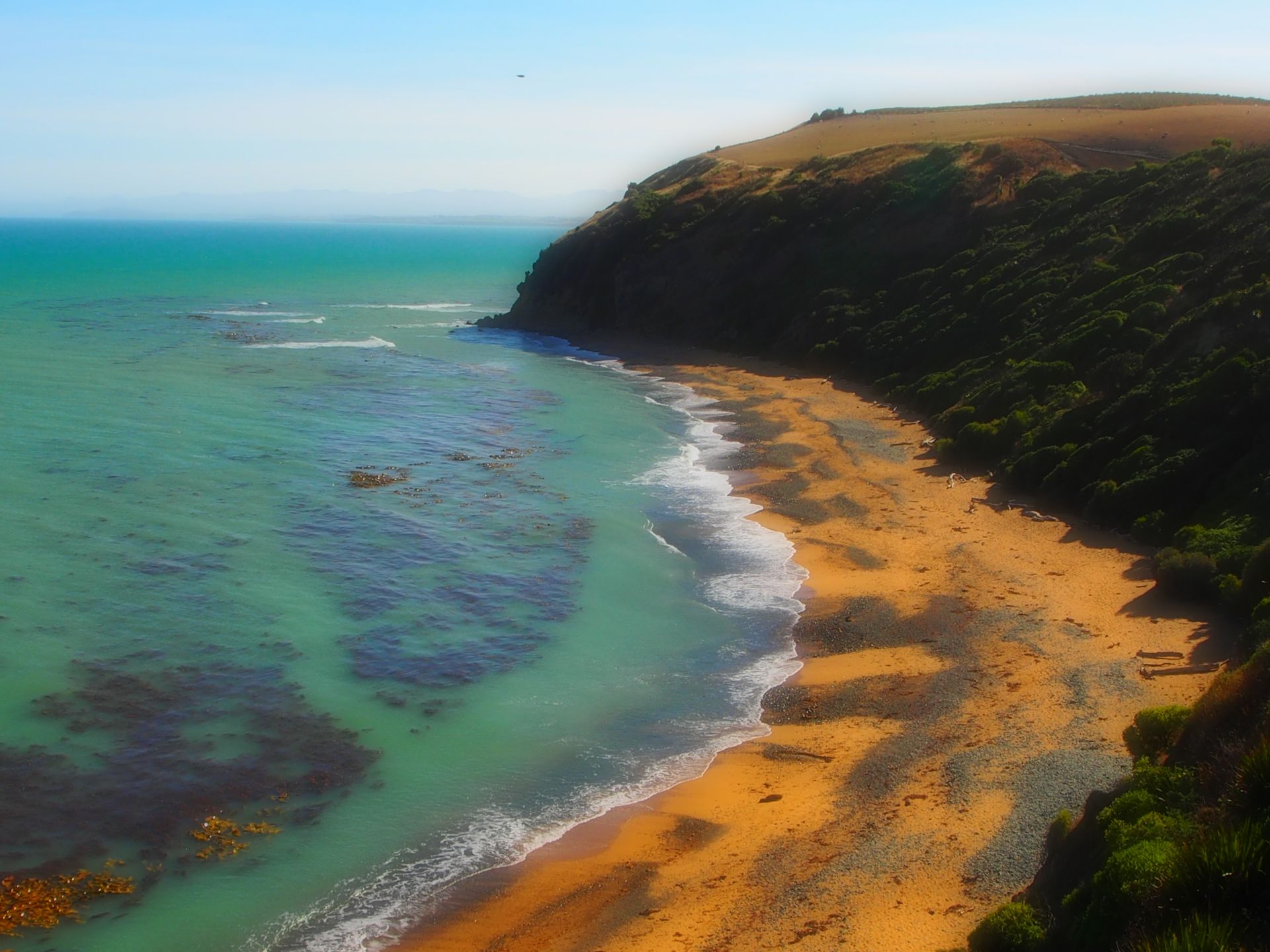
It's almost 6:00 p.m. now and I was told that there will be something to see after 6:00 p.m. However, there are only 8 or 9 of these rare penguins living here and the bay is quite large. Around half past six, someone spots one of them. I focus on it, but even with the largest lens, it's difficult because it's sitting in the shade. Apart from a few sea lions and a seal, that's all, and I leave there shortly after 7:00 p.m.
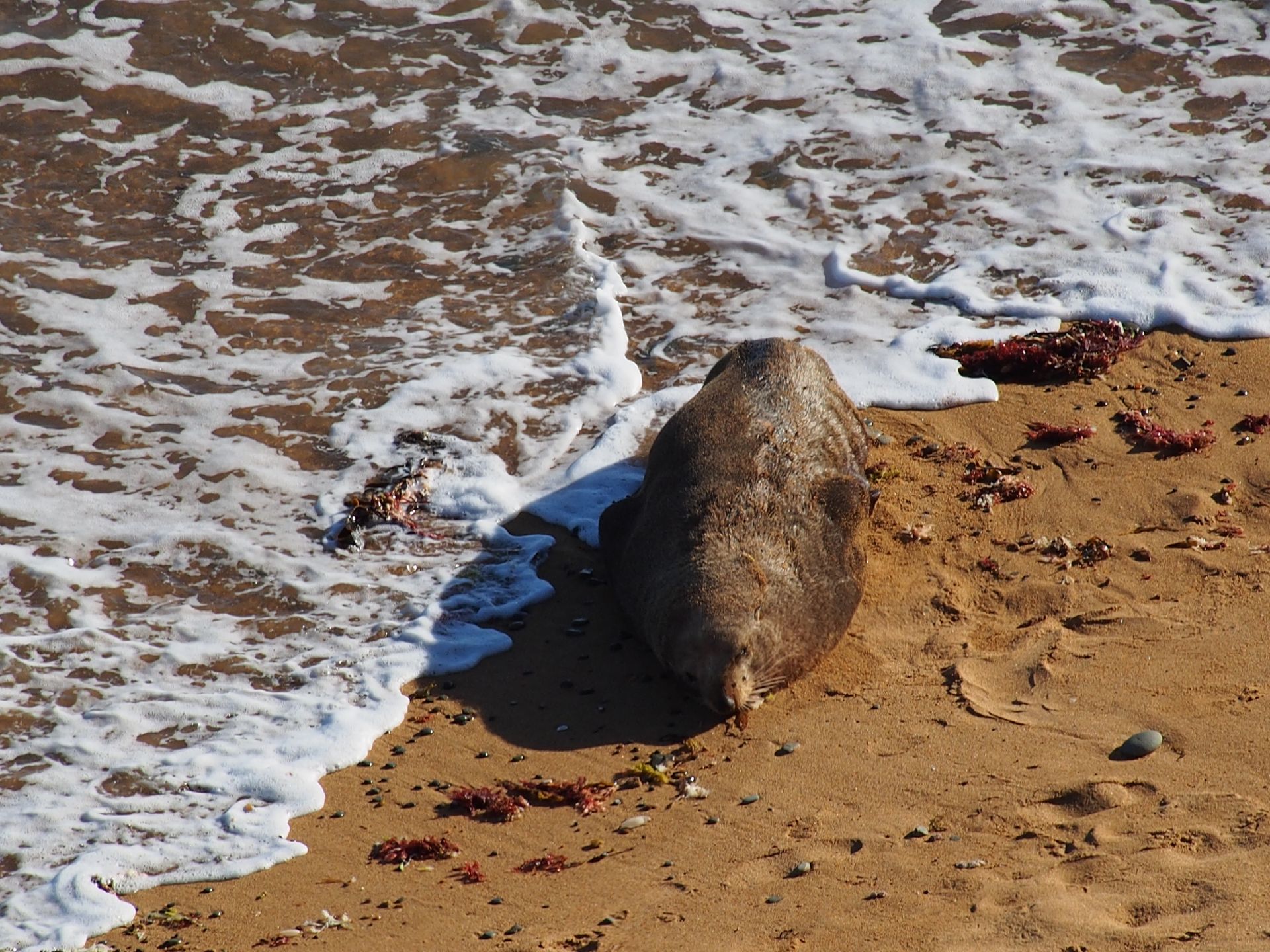
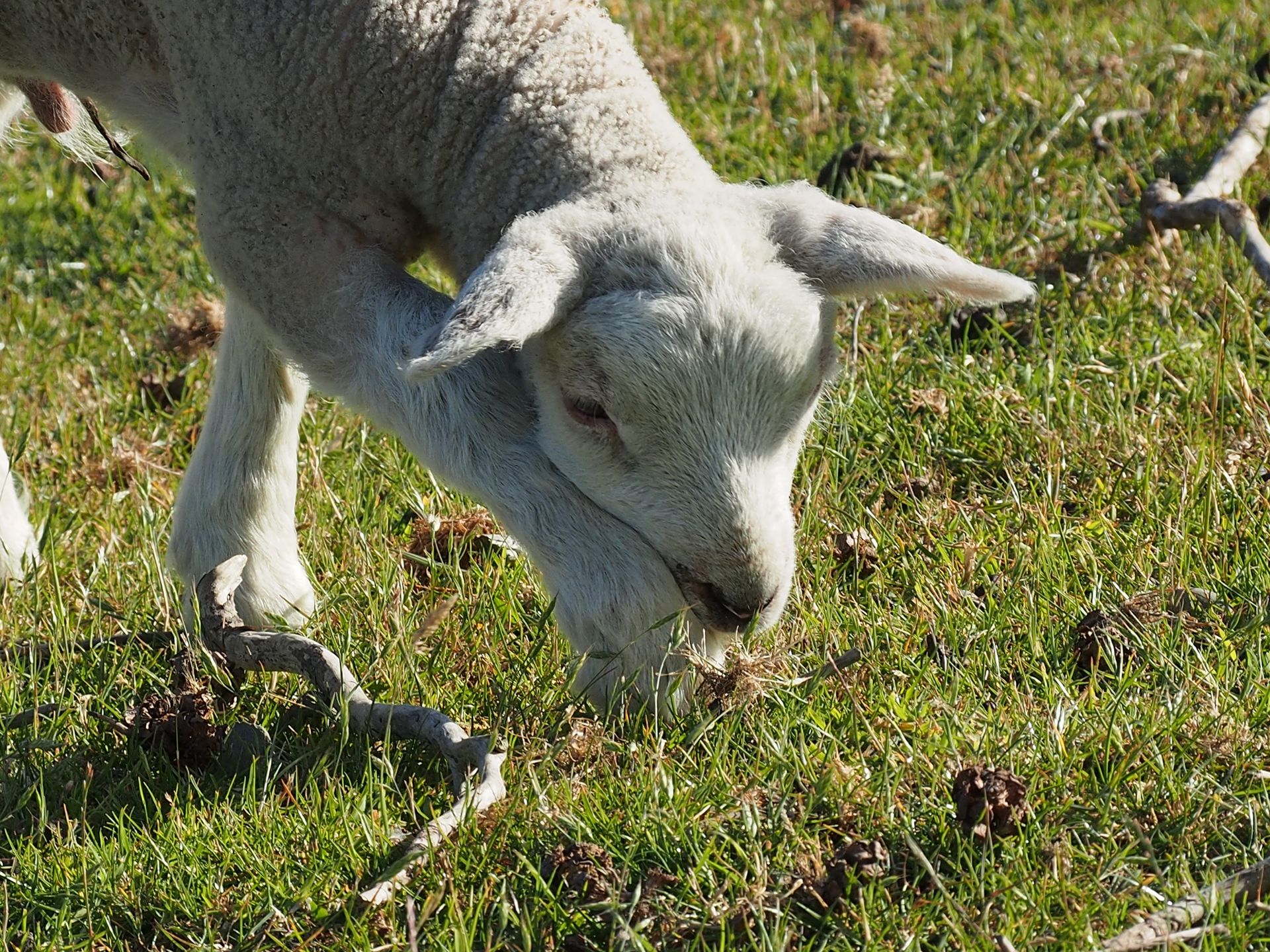
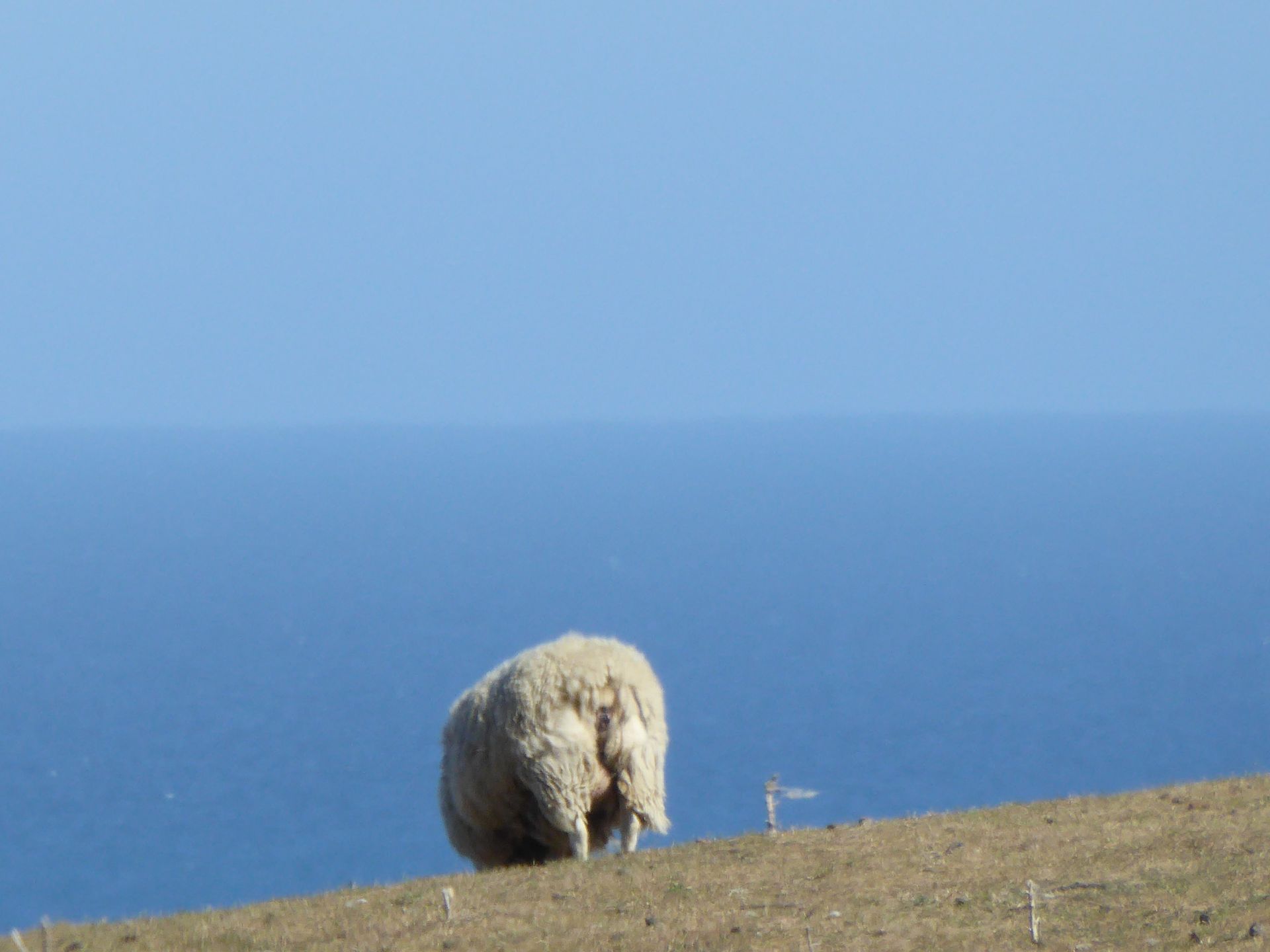
I'll go to the visitor center for the Blue Penguins afterwards and sit in the Portside restaurant next door and have blue cod & chips again. At 8:30 p.m., the doors across the street are opened for the penguin storytelling, so I can eat here in peace.
The spectacle takes place in two groups. The regular visitors, like me, pay 28 dollars and sit on wooden benches with a view of the rock ramp that these little penguins are supposed to come up. The premium visitors (40 dollars) sit a bit closer and also see the penguins walk to their quarters.
Blue Penguins are the smallest species of penguins. They grow up to 30cm and weigh about 1 kilo. They live in burrows and the adults are out at sea during the day. They cover a distance of between 25 and 50km before returning home in the evening. So it's a tough day! These penguins feel safer on land in the dark, which is why they only come back to land at twilight or in darkness. It's currently breeding season and many of the small wooden houses in this man-made colony are occupied by chicks. Since there are no enemies on land here, such as dogs, cats, ferrets, or possums - because care is naturally taken of that here, the population has now increased to over 500 penguins.
The chicks are thrown out of the nest after about 5 weeks. No wonder when you see how forcefully the parents attack the returning parents who have paddled and caught fish for about 16 hours, crawled up the slope, and then fed the young ones. Usually, 2 eggs are laid, so two hungry beaks are waiting for the parents. Penguins stay together with their partner for a lifetime and always return to their familiar abode when it's time to build a nest.
It's now summertime and at 9:00 p.m. it's still not really dark, but starting to get twilight. The penguins arrive on land in so-called rafts. These are groups of 5-20 or sometimes even 50-70 penguins. While they go fishing alone at sea during the day, the little penguins gather about 500m off the coast and then come ashore together with a wave. This is for the safety of the animals, as sea lions, for example, are a serious threat to them, and they feel safer in a group.
The first group arrives around 9:30 p.m. My goodness, it's so adorable! Carried by a wave, they drift onto the pebble beach and then waddle over the stones to this ramp. There, they engage in extensive feather care. They shake themselves, oil their feathers, make everything tidy, and when all the friends in the group are ready, the group goes up the rest of the slope together and marches in penguin formation to the "garden" of the colony, where several hills and even houses underground have been set up. The penguins now walk here in semi-darkness, across the lawn, the small hills, and chatter and squeak - it's hilarious. Since a tour bus with Chinese tourists is leaving at 10:00 p.m., there are soon fewer visitors and they stand at the small fence instead of the steps of this amphitheater, from the roof of which yellow light illuminates the arrival of the penguins. While no visitor is allowed to take photos or videos because they don't want to disturb the penguins in their natural environment with electronics, the guide has a microphone and comments while the penguins roll in behind him and the light shines from above. Well...
I'm there until almost 11:00 p.m. and regret more than once that I'm not allowed to take photos. Meanwhile, over 200 penguins have returned home and their chatter can also be heard in the bushes. I get into my car and check underneath to see if there's one sitting there because they come out of the water everywhere here. Just 50 meters away, a group of penguins crosses the road and the cameras click. They're so adorable!

I go up the hill above the city to take photos of the stars, but it's not working out. So I go back to the hotel. Thames Street is completely deserted and the beautiful old houses are beautifully lit. It's almost midnight when I reach my room and now I secure my pictures and enjoy another glass of wine.
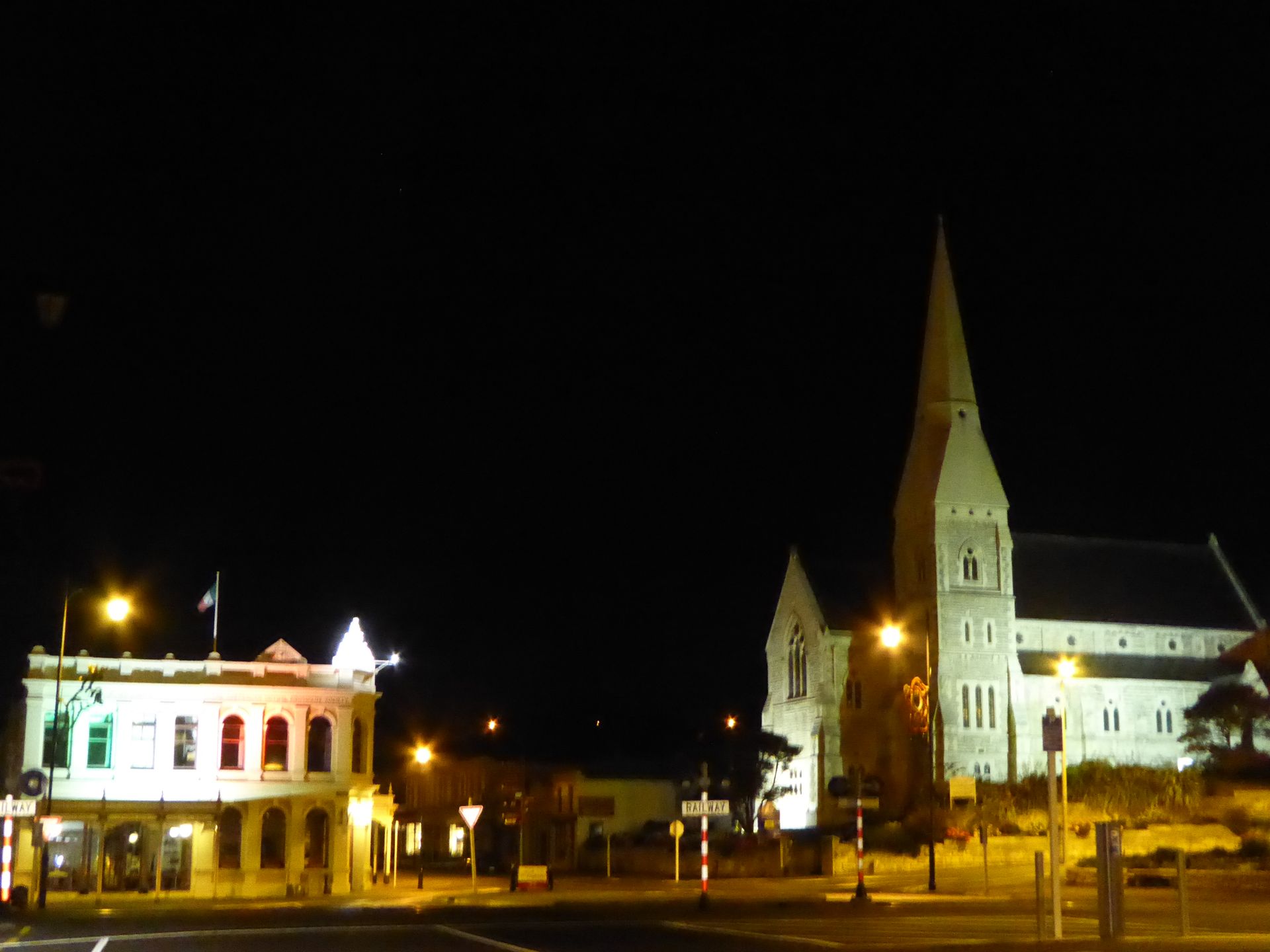
Oamaru at night
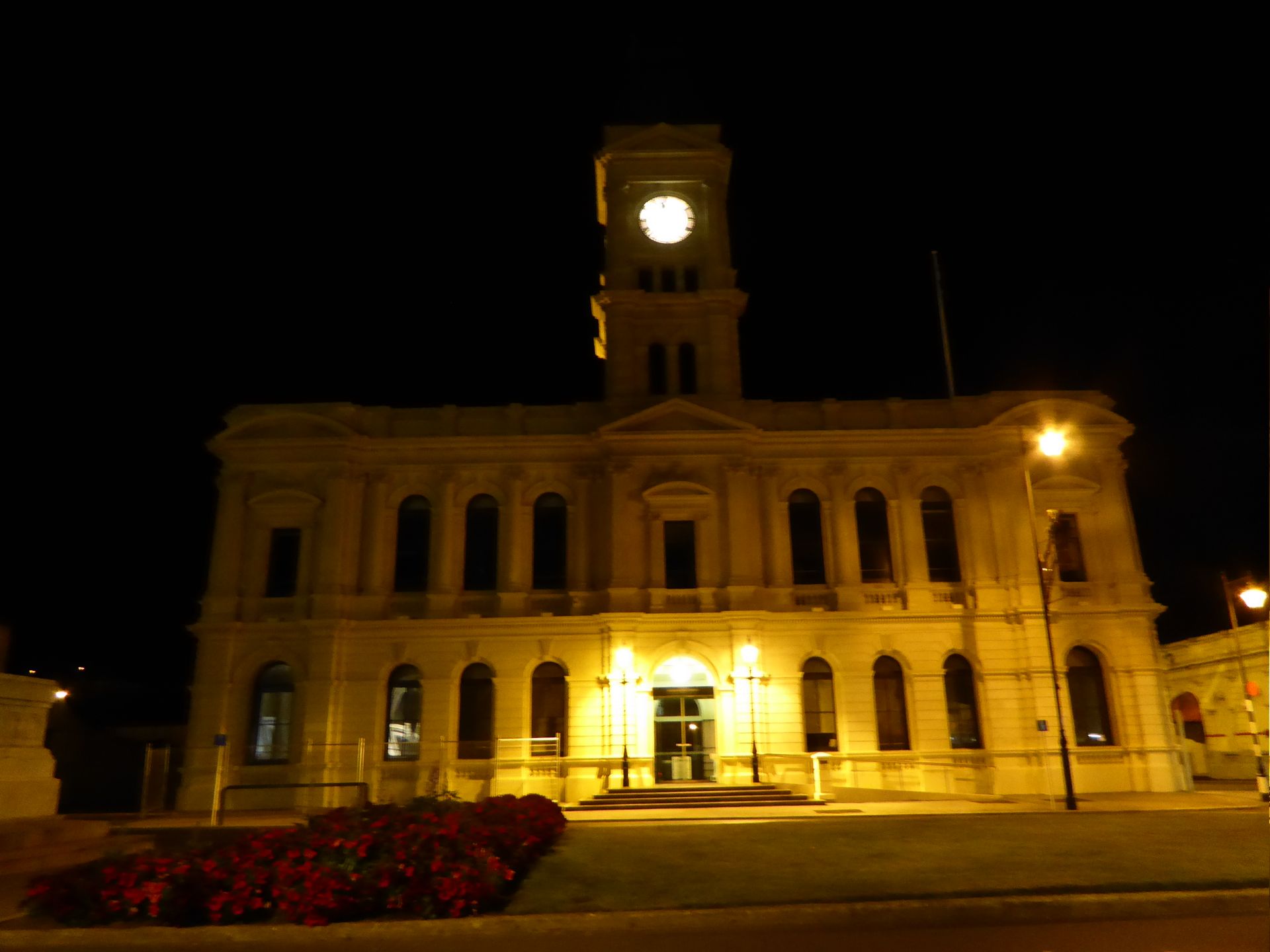
Meanwhile, I've decided to extend my stay on the South Island by 2 days, so I'll either rebook or cancel the ferry and also contact Europcar to change the car reservation. This way, I can drive more leisurely in the next few days. Because if I were to stick to my original plan of driving from Oamaru to Kaka Point tomorrow, I wouldn't have time to visit the Otago Peninsula, where you can see albatrosses and penguins.
Daily distance: 300km
Subscribe to Newsletter
Freagairt

Aithisgean siubhail Na Seulan Nuadh
